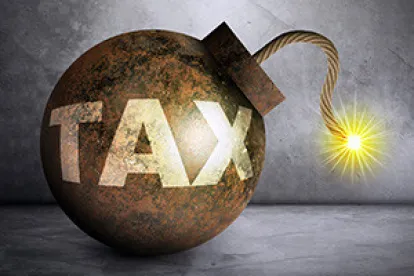Due to the introduction of new tax legislation on 6th April 2016, distributions made to shareholders of companies undergoing Members’ Voluntary Liquidation (MVL) are now treated as income (rather than capital) and are taxed accordingly. The result is that the tax rate on MVL proceeds has shot up to a staggering 28%, as detailed in our previous article. For distributions to avoid being taxed at this rate, they must have been made before the 6th April 2016. Has the rush to take advantage of the lower level of tax available under the previous tax regime left directors and IPs with a ticking time bomb?
To put a company into MVL, uniquely amongst corporate formal insolvency processes, directors swear a statutory declaration of solvency – a statement that the company will be able to pay all its debts in full with interest in a period not exceeding 12 months. From the outset, an IP appointed as liquidator is reliant upon this declaration and the accuracy of the company’s accounts, to list all the assets and liabilities of the company to ensure that all the creditors of the company will be fully paid from the proceeds of the liquidation – the primary aim of an MVL. Once creditors have been paid in full, the remaining balance is distributed amongst the shareholders and the liquidator will dissolve the company.
This is a straightforward procedure with a shell company as part of a corporate re-structuring or a cashing-out procedure where there are assets and few liabilities to muddy the waters, but is a much different proposition with a trading company. A company engaging in business will have a more complex set of accounts, with new debts being created and old debts being paid off. As a result, it is far harder to keep track of every creditor and poor book-keeping or administrative errors could lead to a creditor being overlooked when the company’s liabilities are drawn-up. This difficulty is compounded further if the directors of the company are careless or negligent in their running of the company, or even, in the worst case scenario for a liquidator, fraudulently conceal creditors to ensure a return for the members from the assets of the company.
If, at any point during an MVL, the liquidator determines that there are not enough assets in the company to settle all the creditors in full with interest, the winding-up will be converted into a Creditors’ Voluntary Liquidation (CVL) by calling a meeting of the creditors to present a full statement of the affairs of the company pursuant to s.95 and s.96 of the Insolvency Act 1986.
Where that happens, there will be an investigation into whether the directors had reasonable grounds to swear the statutory declaration of solvency. If the directors cannot prove reasonable grounds for swearing that declaration, they are guilty of committing a criminal offence and can be liable to an unlimited fine and/or two years imprisonment. It is possible that, as these unpaid creditors come out of the woodwork seeking repayment of their debts, we could be seeing a rush of MVLs being converted to CVLs.
A reliance on the declaration of solvency, coupled with the time pressure to make distributions before the 6th April deadline, may have resulted in IPs making distributions to shareholders before all creditors are fully paid. If a creditor appears after all the assets in the company have been liquidated, known creditors paid and shareholders have received the balance, who will be liable for the unpaid creditor’s debt?
It is the obligation of the IP in an MVL to ensure that assets of the company are distributed according to the statutory order of distribution and therefore, ensuring that there are enough assets to satisfy all the creditors in full before making distributions to shareholders. If they haven’t been thorough with their investigations into the company’s accounts, they could be vulnerable to a misfeasance claim for the value of the company’s unpaid debts.
For this reason, it is always advisable that IPs always take deeds of indemnities from the members receiving early distributions (or, alternatively, a guarantee from any parent company) to protect them against any liability as a result. However, an indemnity is only worth the paper it is written on. In the event of an uncooperative or insolvent shareholder/parent company, with the costs and delays involved in contested litigation, it might not be possible to recover the full amount of any distribution made. Where an unpaid creditor’s debt was greater than the recovery under an indemnity, the IP could be personally liable for the shortfall.
Despite the (supposedly) quick and simple nature of the MVL, the rush to make distributions before the 6 April deadline means that there is a potential risk for both directors and MVL liquidators if creditors come out of the woodwork after distributions have been made, especially where the liquidation is tipped from a solvent to an insolvent one as a result.
Tick, Tick!
Charles Draper is the author of this article.



 />i
/>i

